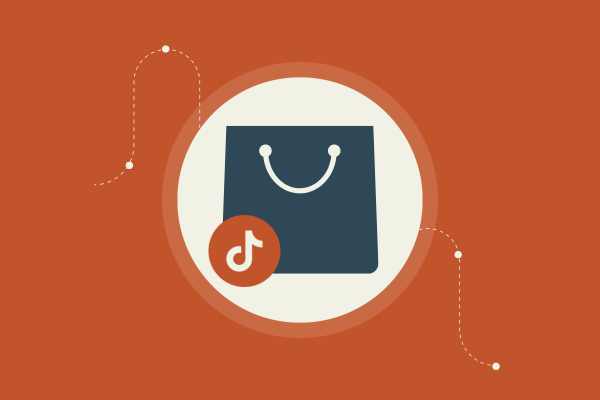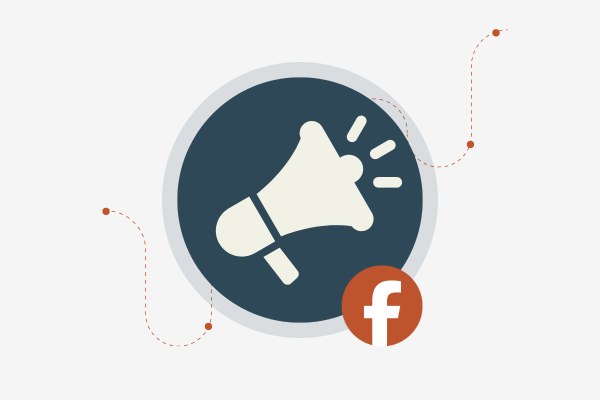Are Salaries Considered Fixed Costs in eCommerce?
Ever wondered if salaries are fixed costs in your eCommerce world? Let's cut to the chase. Salaries in your eCommerce business are considered fixed costs. This means you pay your employees the same, whether the sales are booming or not.
Fixed costs play a huge role in how you manage your finances. While things like rent and insurance are typical fixed costs, salaries can often be overlooked.
Keeping an eye on these steady expenses is crucial because they affect your bottom line each month.
Understanding these costs helps you make smarter decisions. Knowing what you spend can lead to better strategies and improved profitability. That's the golden ticket in eCommerce—keeping those profit margins healthy and robust.
Key Takeaways
Fixed costs remain constant, impacting financial planning.
Salaries are key components of fixed costs in eCommerce.
Managing costs effectively boosts profitability.
Breaking Down Fixed Costs
Fixed costs are the steady expenses your business runs into every month. They don't change with sales or production levels. Think of them as the price of keeping the lights on.
What Are Fixed Costs?
Fixed costs are expenses that stay the same, no matter how much you sell. They include things like rent, salaries, and insurance. You're paying these bills whether you sell one item or a thousand. For instance, paying a web developer an annual salary is a fixed cost.
Unlike variable costs, fixed costs don't shift with your business volume. They are about stability. This makes them predictable, which is great for budgeting. But remember, they have to be covered even on slow months.
Characteristics of Fixed Costs
These costs are constant and unavoidable. They can include rent, insurance premiums, and property taxes. Rent or a lease payment for your office or warehouse is a classic fixed cost. You pay the same amount every month, rain or shine.
You also need to think about interest expense and depreciation. These are recurring expenses that hit your books regularly. They don't depend on how much you sell but are crucial for running your shop without hiccups. It's about having a firm foundation, so your business doesn't crumble under cost pressures.
Salaries as a Cost Component
When you're running an eCommerce business, understanding how salaries fit into your cost structure is crucial. You'll want clarity on whether these costs stay steady or fluctuate and how they relate to direct or indirect labor roles in your operation.
Are Salaries Fixed or Variable?
Salaries are like the anchor of your ship. Steady, reliable, fixed expenses. Whether sales soar or sag, those wages stay put. For full-time employees, their pay doesn't change based on the number of hours worked or items sold. They’re your fixed costs.
Now, if you've got folks earning hourly wages or commissions, that’s different. These would be your variable costs. They change with the rhythm of your business. The more hours they work or the more they sell, the higher these costs get. It’s crucial to separate the two for budgeting.
Direct Labor vs Indirect Labor
Direct labor is pretty straightforward. Think of the folks directly involved in making products or providing services. In manufacturing, it's the assembly line workers. In eCommerce, maybe it's the customer support team dealing with direct orders.
Opposite that, you've got indirect labor. These people support your operation but aren’t directly churning out goods or services. Salaries here could be for managers, administrative staff, or maybe the IT guy. Even if they keep the wheels turning, they’re considered indirect costs.
Knowing who's who helps you budget smarter. Treating direct and indirect labor costs separately lets you see where your money's going. Pay attention, because the distinction impacts your bottom line way more than you think.
Understanding Variable Costs
Variable costs are the spicy part of your eCommerce strategy. They wiggle and change based on your sales volume. When you sell more, these costs go up. When sales dip, so do they. Think about how each sale's cost isn't carved in stone but moves with your business flow.
Variable Costs Explained
Variable costs are those expenses that climb up or slide down with your sales. Imagine the cost of raw materials, like the stuff you use to make products. More sales mean more raw materials. Same goes for commission-based payments – sell more, pay more commissions.
These costs also cover things like shipping or packaging per unit sold. For example, if you sell a shirt, the cost of the fabric, buttons, and tags goes here. It’s one of those expenses you can control by changing how much you're selling or producing.
Variable vs Fixed Costs
Fixed costs, like your rent or salaries, stay the same no matter your sales. They’re like that steady friend who's always there. On the flip side, variable costs party with your sales volume. Sell more, pay more. Sell less, pay less.
For example, if you’re an online seller, your cost of goods sold (COGS) is a variable expense. Because every product has a cost to produce. But let's say rent for your warehouse is a fixed cost. You pay it, no matter the number of sales.
And there’s the game. Balance between these costs is key to understanding your profit. Keep an eye on variable costs, it’s where you can adjust when sales change.
The Interplay of Costs and Pricing
Understanding the relationship between costs and pricing is crucial for eCommerce success. You need to balance what you're spending with how much you're charging. This doesn't just affect your bottom line—it defines your business.
Pricing Strategies and Cost Structure
Pricing strategies are your game plan. They decide how you cover your costs and make a profit. Are you going for a premium model, focusing on high prices and exclusive value? Or trying to be the budget-friendly option?
Knowing your cost structure is key. You have fixed costs like salaries or rent. These don't change, no matter what. Then, you have variable costs that can fluctuate, like materials or shipping.
Understanding your total cost is the first step. Without it, how do you choose which pricing strategy to use?
Make sure your prices cover both your fixed and variable expenses and leave room for profits. Want to add a discount? That cost better be calculated.
It's like playing chess; every move counts. Look at industry examples and adapt those pricing strategies to your own business model. If your costs shift, your strategies should, too.
Dynamic Pricing in E-Commerce
Dynamic pricing is your secret weapon. It's when prices change based on the market situation. Think of airlines and hotels—they're pros at this.
In eCommerce, you can use software tools that adjust prices in real time. It's all about supply and demand.
The goal is profitability. When demand is high, raise prices. When it's low, cut them down to match.
It's not just random changes. Look at variable costs and how your competitors are moving.
The more data you collect, the better your dynamic pricing will be. This helps maximize margins and control market share.
Be smart with it, or you'll send customers running. Use dynamic pricing to stay ahead, not as a last resort.
Accounting for eCommerce Businesses
Running an eCommerce business means keeping track of numbers. You need to know what’s happening with your money to make smart decisions. Here’s how to get started.
Reading Financial Statements
You’ve got to know what financial statements do. They are like the report cards for your business. The big players in this game are the income statement, balance sheet, and cash flow statements.
The income statement tells you what you earned and what you spent. This way, you see if you’re making money or not.
On the other hand, the balance sheet shows what you own and owe. It’s like a snapshot of your business's worth at a specific point in time.
Cash flow statements keep tabs on cash moving in and out. Monitoring these helps you avoid surprises.
Stay sharp and learn to read these reports. It’s about knowing what you’re dealing with.
Bookkeeping Basics
For solid eCommerce accounting, start with bookkeeping. It's the bedrock of your financial health.
Make sure to record all your transactions. This means every sale, refund, investment, and expense.
You’ve got tools like accounting software to make this easier. They do a lot of the heavy lifting.
Even if you have a small operation, get into the habit of tracking everything. It keeps your data organized and helps during tax time.
Set a routine. Weekly updates can keep you sharp and prevent a mountain of work later on. Being consistent here is key. It’s not just about data; it’s about understanding what drives your success.
Strategies for Cost Management
Managing costs in your eCommerce business can be a game-changer. To do this right, focus on scaling smartly, outsourcing when possible, and optimizing operations for efficiency. Here’s how you can tackle these areas effectively and keep your business thriving.
Leveraging Economies of Scale
Scaling can drop your costs like a rock. Buy in bulk. It’s cheaper! Your suppliers may give you better deals when you purchase more. This can cut down your operational costs.
Another trick? Streamline your processes. When you produce more, your cost per item often decreases. This boosts your margins.
Focus on having the right infrastructure to handle the growth. Efficient warehouses and software can keep operations smooth. More productivity, less stress.
Outsourcing and Automation
Outsource what you can. This can save you big money. Instead of hiring full-time employees for everything, work with freelancers or agencies. They can handle tasks like customer service, digital marketing, and even logistics.
Automation is another cost saver. Use software tools to automate repetitive tasks. It frees up time for you and your team.
Automate inventory management. This reduces errors and helps keep your stock levels just right. No more overstock or stockouts.
Energy-Efficient Operations
Cut energy costs by going green. Use energy-efficient lighting and appliances in your warehouses and offices. This doesn’t just save money; it’s good for the environment.
Invest in technologies like smart thermostats and sensors. These optimize energy use without sacrificing comfort or productivity.
Consider renewable energy. Solar panels, for instance, might be a good investment. Over time, they can reduce your electricity bills significantly. Plus, it boosts your company’s green credentials.
By focusing on these strategies, you can reduce operational costs and keep more profit in your pocket.
Analyzing Business Performance
Diving into your eCommerce business numbers can feel like solving a puzzle. You need to know when you're really making money and how your costs stack up. Let's explore some ways to crack this code.
Break-Even Analysis
Ever wondered when you actually start making money? That's your break-even point. It's the magic number where your sales exactly cover your costs.
When you're analyzing this, focus on your fixed and variable costs. The lower your costs, the faster you'll hit that sweet spot.
Calculate it like this: divide your fixed costs by the contribution margin per unit. Once you hit this point, every extra sale contributes to your profits. This is where operating leverage kicks in, multiplying your profit as sales increase.
Keep an eye on this analysis to make smarter business decisions and set goals that propel your company forward.
Financial Analysis Insights
Understanding your business performance means more than just sales numbers. Dive into your profit margins and cash flow. Look at your EBITDA to see your profits before interest, tax, depreciation, and amortization oozes out of your system.
Check your financial metrics regularly. They tell you if those efforts to scale are paying off or just draining your resources.
Compare these numbers against industry standards to evaluate how you measure up. By keeping tabs on these, you can spot trends, adjust strategies, and maximize growth opportunities. Numbers don't lie, so better stay sharp and keep analyzing for success.
Maximizing Profitability
To really amp up your eCommerce game, focus on smart shopping and keeping your customers happy. These two steps can push your profits through the roof.
Bulk Purchasing and Inventory Management
Buying in bulk is your ticket to fat profit margins. This means you get stuff at a cheaper rate, which instantly boosts profitability. Less cost per item = more money in your pocket. Just make sure you don’t end up with stuff collecting dust.
Inventory management is your safety net. Use tools to track what’s selling and what’s not. Aim for a balance. Too much stock ties up money; too little means you miss sales. Leverage tech to automate orders; restock only when necessary.
Lowering storage costs is huge for maximizing profits. Making smart buying decisions is your secret weapon.
Customer Satisfaction and Retention
Happy customers spend more. It’s cheaper to keep them than to find new ones.
Focus on making every shopping experience smooth and satisfying. Think about fast shipping, easy returns, and reachable customer service.
Create loyalty by offering special deals, maybe a reward program. Email or text them the latest offers.
Don’t forget to ask for feedback and actually use it. When you show you care, customers stick around.
Higher retention rates mean reduced marketing costs and higher profitability. Make them feel valued, and they’ll keep coming back.







